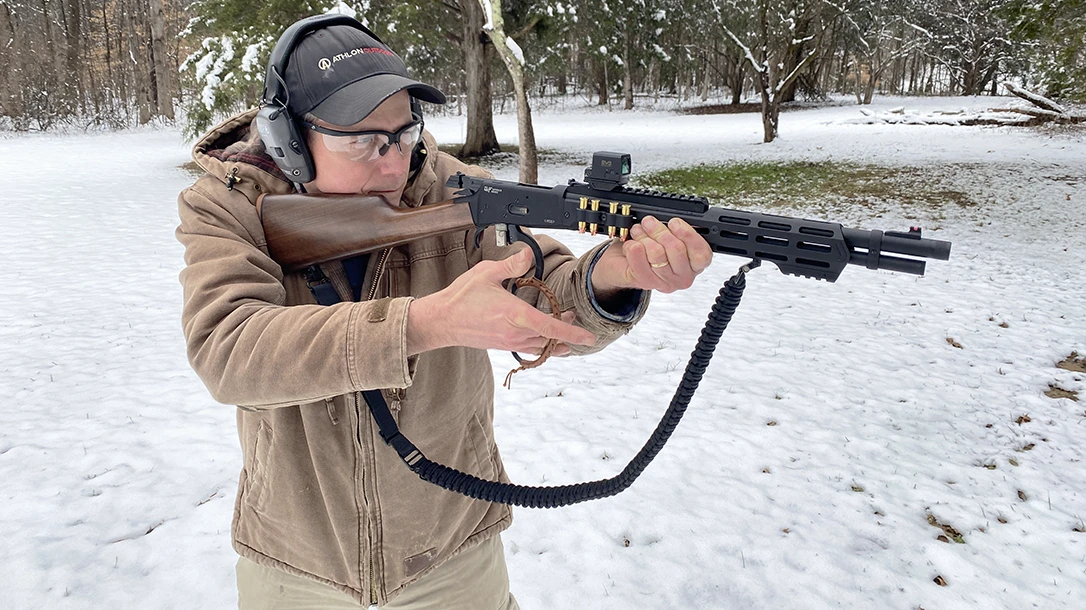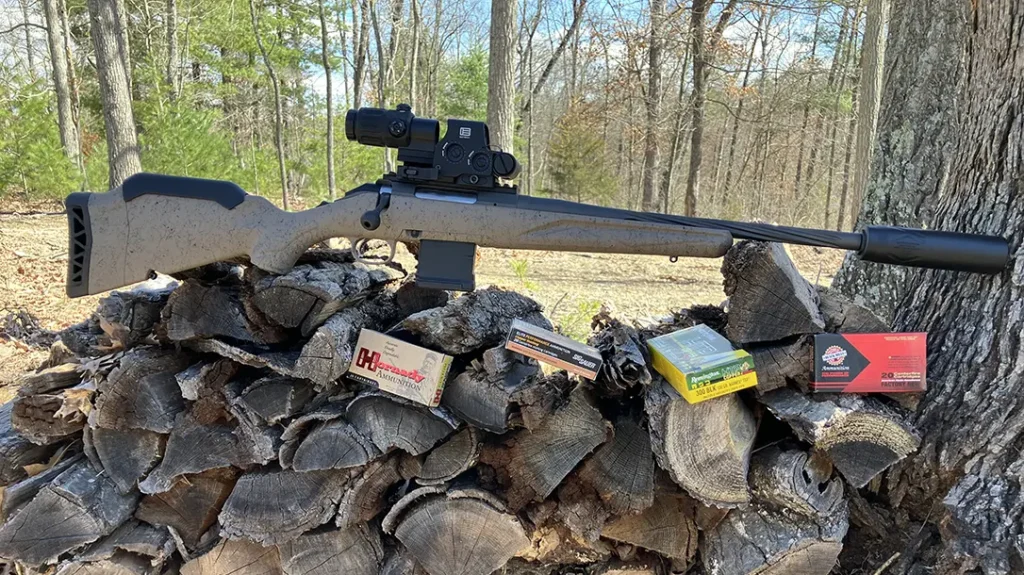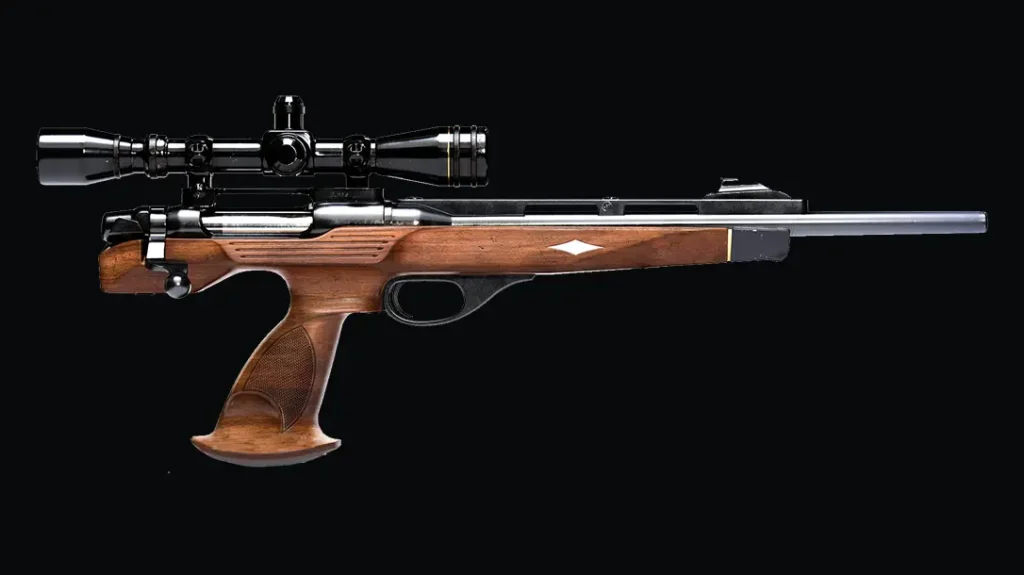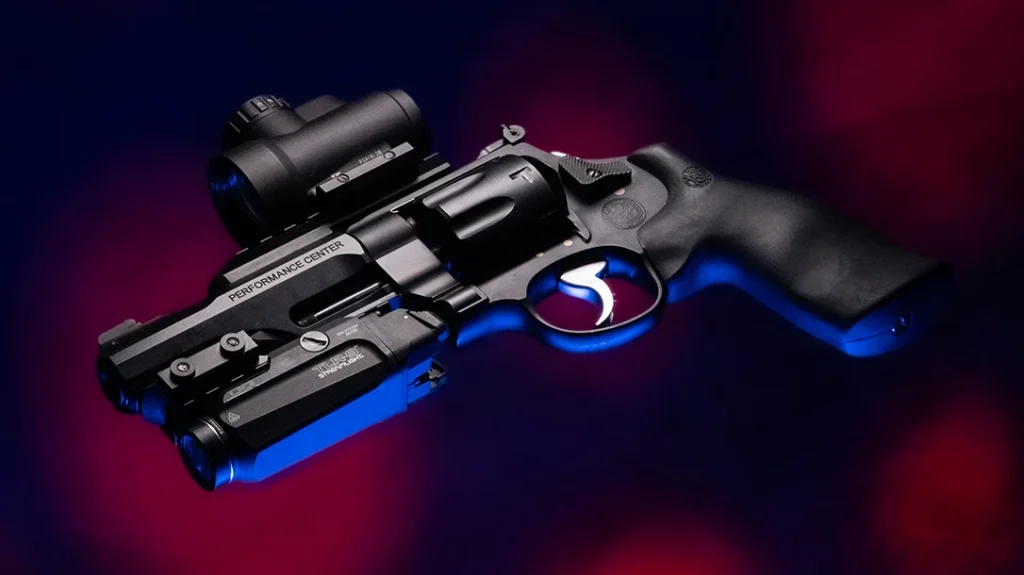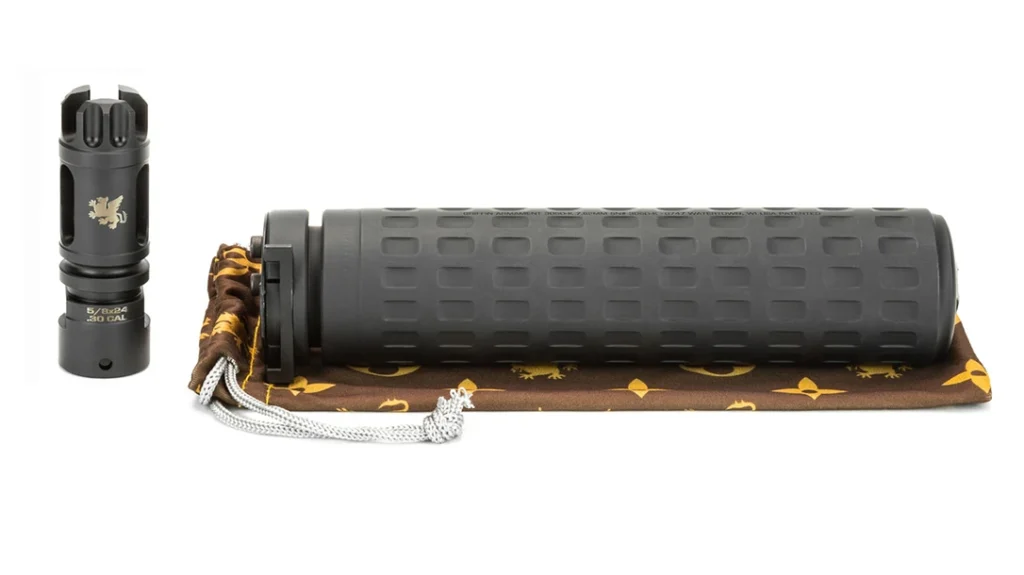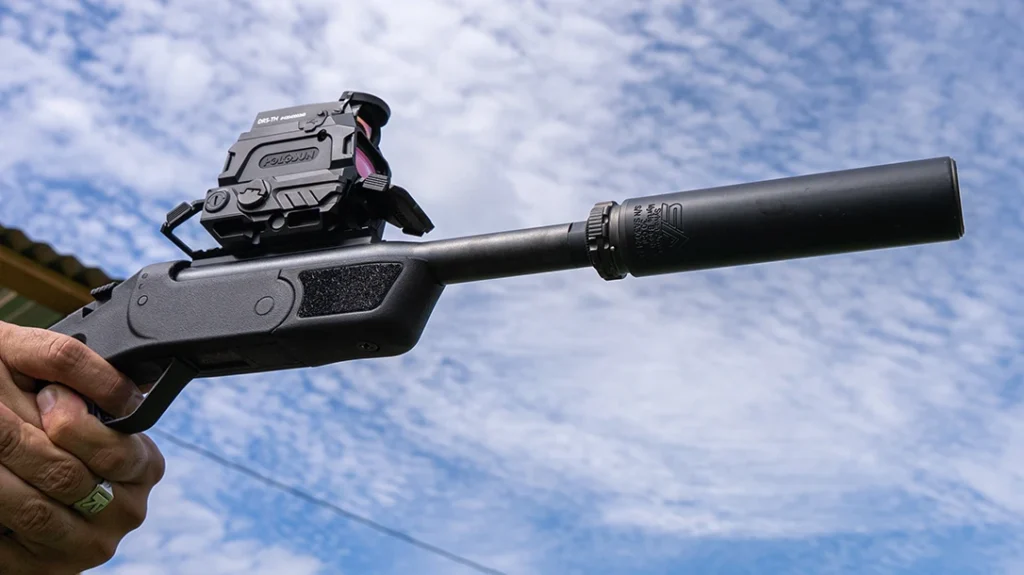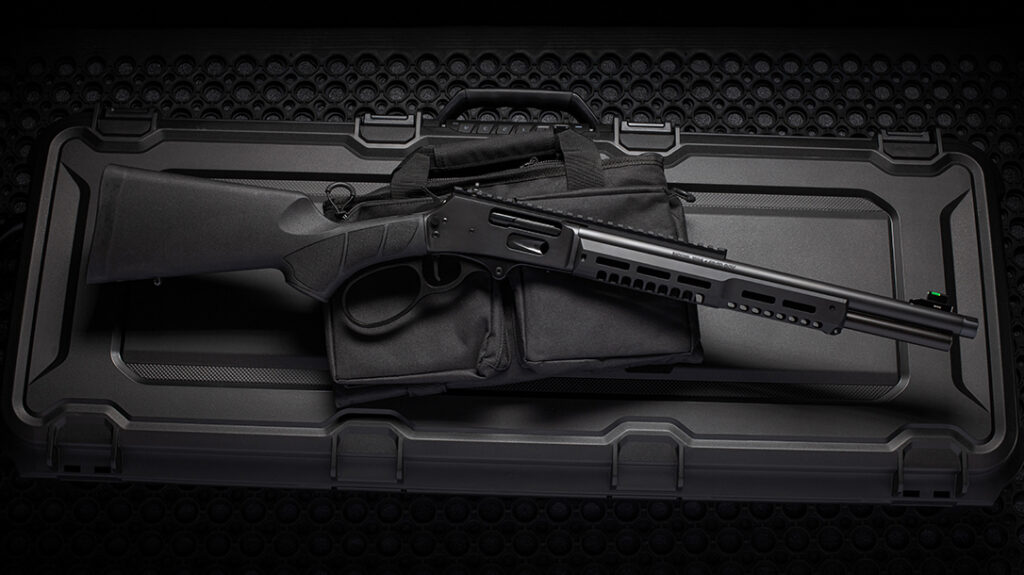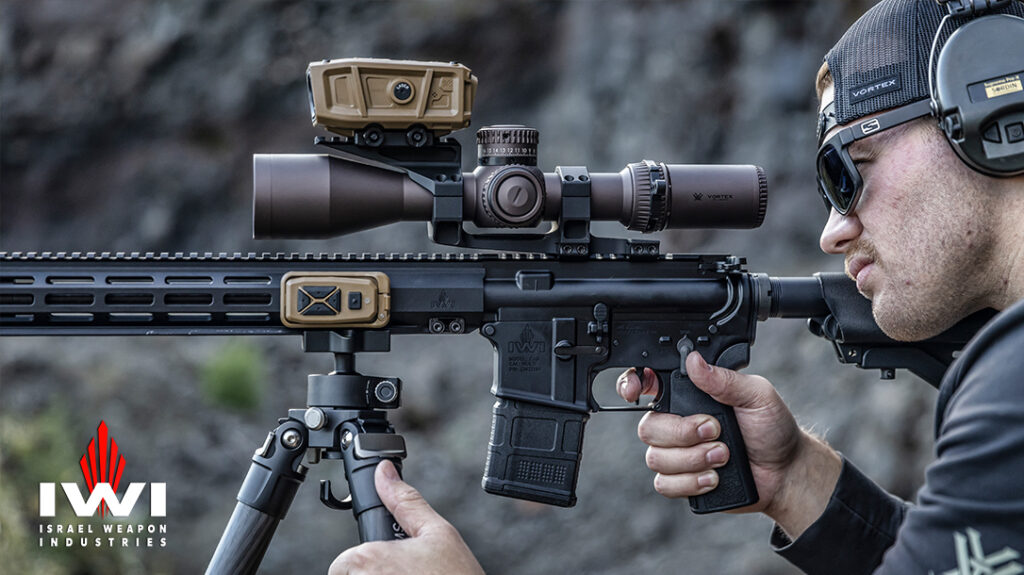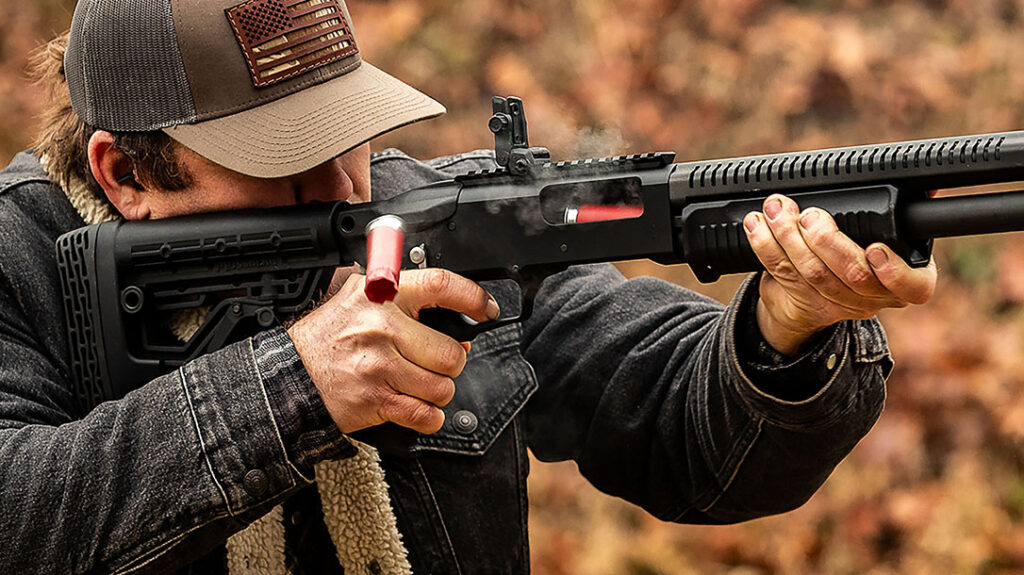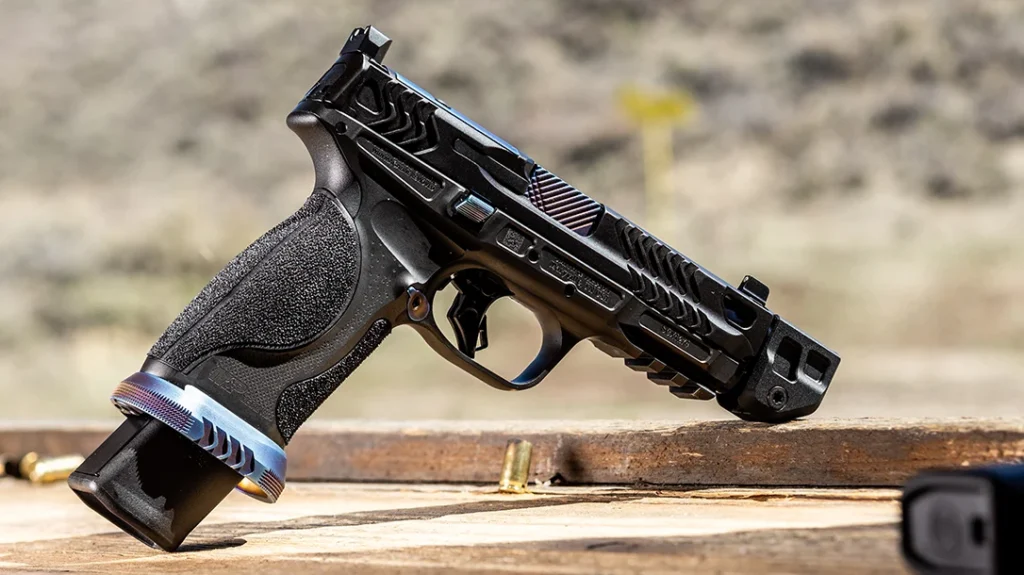Regarding pistol caliber carbines (PCCs), the manually-operated lever-action Winchester Model 1982 still remains one of the world’s most successful PCCs.
From 1892 to 1941, Winchester made at least 900,000 of them. The Spanish made around a million more clones from 1915 to 1938 under the “El Tigre” brand. Brazil still produces clones of this slim and handy little carbine today. Miroku of Japan manufactured Model 1892 replicas for Browning and later for Winchester. More recently, Chiappa Firearms in Italy started making very high quality historic replicas. It then followed up by offering modern tactically styled models sporting polymer stocks, threaded barrels and aluminum handguards.
These days, the Turkish manufacturer Hugtek is producing several Model 1892-inspired leverguns for GForce Arms that stand out among their peers past and present. Instead of the traditional steel receiver, these models from GForce Arms use hardcoat anodized aluminum. This seemingly small change makes a notable difference. I wonder why nobody thought of it before?
Advertisement — Continue Reading Below
The GForce Arms Saddlehorn Series

GForce Arms is marketing its new lever guns as the “Saddlehorn” series. They’re all chambered for .357 Magnum/.38 Special and GForce sells both traditionally-styled models with walnut stocks and adjustable open sights along with a tactical model, the LTAC 357. Incidentally, I tested the LTAC 357 for this story.
I always liked the Model 1892, especially in .44-40, and I wanted to see what it was like reimagined as a 21st century firearm. With a street price around $700, The GForce Arms Saddlehorn is less than half the price of the Chiappa Firearms’ tactically styled 92 Wildlands Takedown. However, I don’t think the GForce is only “half the gun.” Even though Chiappa is exceptionally well- made and probably indestructible, I found the .357 Magnum GForce Saddlehorn LTAC 357 to be a solid value in its own right.
Advertisement — Continue Reading Below
The LTAC 357 is also the lightest 16.5 inch barrel Model 1892 variant I’ve ever seen. Unloaded, it only weighs 5 pounds, 9.4 ounces. It’s roughly 5 ounces lighter than a steel receiver gun with traditional furniture. The LTAC 357’s weight reduction helps to compensate for the weight of the accessories you’ll want to add on. Choose your red-dot and suppressor thoughtfully, and with the LTAC 357, you’ll still be under the weight of a steel receiver 1892.
GForce Arms LTAC 357 Details
The LTAC 357’s metal surfaces are finished in black. It includes an attractive walnut buttstock with a soft rubber buttpad; shooting-wise, its recoil is mild enough. Even with “hot” .357 loads, no cushioning is necessary for comfortable shooting. Its grippy, soft buttpad does help prevent the stock from slipping on the shoulder or along the floor (if the gun is leaned up against the wall).
Aluminum Receiver

Advertisement — Continue Reading Below
Given the use of aluminum instead of steel, the LTAC 357’s receiver is approximately 0.10 inches wider, for extra strength. This also makes this receiver’s lines differ slightly. The portion where the lever hinges is cut concave rather than flat. Where the loading gate sits, small scoops are cut away fore and aft, likely to compensate for the extra thickness of the receiver’s walls. Internally, to reduce the stress on the bolt-locking slots on the inside of the aluminum receiver, the corners of the slots are radiused instead of cut at the typical sharp 90 degree angle. This is also true for the edges of the steel locking bolts that mate with them.
The LTAC 357’s receiver is finished with black hardcoat anodizing to resist the friction of the carbine’s internal steel parts. These steel parts also have a nice polish that results in the action cycling very smoothly. LTAC 357 lever loops are Hollywood-style large loops with a neatly fitted and stitched piece of leather to cushion the knuckles.
LTAC 357 Barrel, Sights & Suppressor
The LTAC’s 16.5 inch barrel has a threaded muzzle allowing easy installation of a muzzle device or suppressor. The carbine’s iron sights along with its integrated Picatinny optics base are attached to the barrel. Curiously, the rear sight is not adjustable for windage.
Advertisement — Continue Reading Below
Though I found the LTAC’s iron sights to be decently regulated at 50 yards, a red-dot optic will get you greater precision and also allow you to aim over a suppressor. To be clear, I found the LTAC 357’s iron sights just high enough to use with a Silencer Central BANISH 9K suppressor; a unit I think ideally suited to carbines like this one or any 9mm and/or (smaller caliber) semi-automatic pistol. The BANISH 9K is a lightweight and compact 3D printed titanium suppressor. It’s so light that semi-automatic pistols don’t need a booster to cycle with it. It’s also full-auto rated and suitable for 5.7×28 mm through .30-30 Winchester. The noise reduction is 132 decibels at the ear with 9mm. This compact unit is very versatile and retails for $700.
Trigger
The trigger pull of my LTAC was similar to that of a target rifle with a 1.75 pound single stage. I don’t know whether this is typical for GForce carbines, but it’s a great asset when bullseye shooting. Strict trigger-finger discipline is a must when the pull is less than two pounds!
I’d prefer a heavier 3-4 pound trigger pull for a hunting or self defense gun. During testing, I used the old-school half-cock hammer safety notch to minimize the chance of an unexpected discharge. On a positive note, despite the light trigger pull, I could not make the cocked hammer dislodge from the sear by striking the butt hard on the ground.
Advertisement — Continue Reading Below
Handguard

LTAC 357 carbines include a 12 inch long handguard of extruded aluminum, rounded at the top with five facets on the sides and bottom. It includes M-LOK slots all throughout. (eight rows in total). The bottom front portion of this handguard also includes a 2 inch integral Picatinny rail. The LTAC’s handguard offers plenty of accessory mounting versatility, but is not the most solid base for a targeting laser. I noticed it loosened up while shooting, and the wiggle will affect the point of impact to some degree when using a laser. The handguard is anchored to the receiver with two screws (both of which would benefit from some blue Loctite), and a single screw spanning the forend from side to side just under the barrel. This screw limits upward movement of the handguard, and because of it the LTAC 357 isn’t truly free-floated–but it’s pretty close.
Meprolight MPO Red-Dot
For accuracy testing, I first shot with the iron sights and then installed a Meprolight MPO PRO-F closed-emitter red-dot sight. The MPO lets you pick a reticle option between a 3 MOA dot, 33 MOA bullseye ring or dot-and-ring combined. It only adds an extra 1.8 ounces to the LTAC 357. Though the Metrolight MPO uses the Trijicon RMR footprint, I mounted it to the LTAC with Meprolight’s low profile Picatinny adapter, sold separately. Prior to zeroing, I set its brightness low enough to get a consistent point of aim in the center of the black bullseye.
Advertisement — Continue Reading Below
Ammunition & Accuracy Testing

Since the LTAC has a tubular magazine, I avoided ammunition with pointy bullets to prevent the tips from tapping the primer of the next round under recoil. For safety’s sake, it’s best to shoot flat or hollow-point bullets that can get through the loading gate. Keep in mind that loading cartridges through the loading gate requires a little finesse too.
To test the LTAC 357’s accuracy, I fired five round groups at 50 yards off a bench with a rest. I measured each group by measuring the distance between the two furthest bullet holes from center to center. I captured muzzle velocities with a Competition Electronics Digital Pro Chrono Chronograph set 15 feet from the muzzle.
Advertisement — Continue Reading Below
The LTAC 357 is a fun plinker with .38 Special, but loaded with .357 Magnum it becomes a serious hunting and self-defense carbine.
Federal’s American Eagle .357 Magnum 158 grain JSP was the most accurate load tested. It was also the heaviest hitting from my ammo selection. The Federal load averaged 1,757 feet-per-second (fps) and printed groups (averaging?) 1.96 inches. At 15 feet from the muzzle, this load generated 1,083 foot pounds of energy.
Black Hills’ .357 Magnum 127 grain Honey Badger was the fastest load tested at 1,822 fps with average groups of 2.2 inches and a respectable 999 foot-pounds of energy. The Honey Badger bullet is engineered for maximum hydrostatic shock in flesh instead of expansion. This bullet’s flutes both disrupt tissue and act as a hydraulic brake to minimize over-penetration.
Advertisement — Continue Reading Below
Winchester White Box .357 Magnum 110 grain JHP was the softest shooting load at 1,761 fps, average groups of 3.63 inches, and 757 foot-pounds of energy. This cartirdge had noticeably less recoil than the other two, and less drag during extraction from the chamber after firing.

Closing Thoughts
These old lever-action carbines were designed for cartridges like .32-20, .38-40 and .44-40. Due to the taper of their cases, they’re free of the chamber walls the moment the action opens. By contrast, modern straight-walled cartridges like .38 Special, .357 Magnum and .44 Magnum drag against chamber walls for their entire length until they’re clear and ejected.
Higher pressure magnum loads naturally result in more case expansion and more drag during extraction. This is why lever-actions are best operated with swiftness.
Lately, I’ve been interested in paracord slings for their emergency/survivalist value. The LTAC 357 has standard sling swivel studs so I installed a Firefield 2-point paracord sling. It comes with two lockable swivels and adjusts from 37 to 45 inches, so it can be carried across the chest or on the shoulder. The sling is woven from 80 feet of 550 paracord and is the heaviest accessory on the gun at 8.7 ounces.
The Meprolight MPO PRO-F red-dot and BANISH 9K suppressor have a combined weight on only 4.5 ounces! Without the sling, the LTAC 357 still weighs less than a steel receiver gun. Its overall length with the can is only ½ longer than the typical 20 inch barreled carbine. That’s a trade-off with no downside.
Specifications: GForce Amrs Saddlehorn LTAC 357
- Capacity:8 round tubular magazine
- Caliber: .357 Magnum/.38 Special
- Action: lever action
- Trigger: 1.75 pound pull single stage trigger
- Material: aluminum receiver and forend
- Finish: matte black anodizing and nitrocarburizing
- Stock: walnut buttstock, aluminum 12 inch M-LOK forend
- Barrel Length: 16.5 inches, ½ x 28 inxch threaded muzzle with protective cap
- Overall Length: 34.5 inches
- Weight: 5 lbs. 9 oz. empty
- Safety: manual hammer block safety at rear of breech bolt/half-cock notch on hammer.
- Sights: elevation adjustable rear, fixed fiber optic enhanced front blade
- Accessories: sling swivel bases installed on buttstock and forend, four cartridge holder on forend
- MSRP: $779
Performance: GForce Arms Saddlehorn LTAC 357
Brand Bullet Weight & Type Velocity Best Group
Federal American Eagle .357 MAG 158 JSP 1.757 1.57
Black Hills Ammunition .357 MAG 127 Honey Badger 1,822 1.10
Winchester (White Box) .357 MAG 110 JHP 1,761 3.45
Performance was tested with a series of five-shot groups fired at 50 yards from a bench rest with a Competition Electronics Pro-Chrono Digital Chronograph set 15 feet from the muzzle. Bullet weight is in grains, velocity in feet-per-second and the group size in inches.
